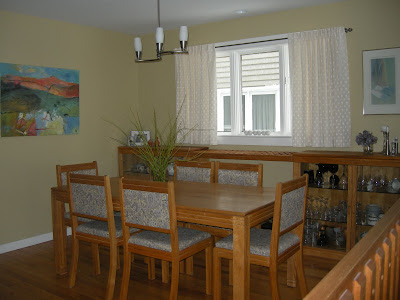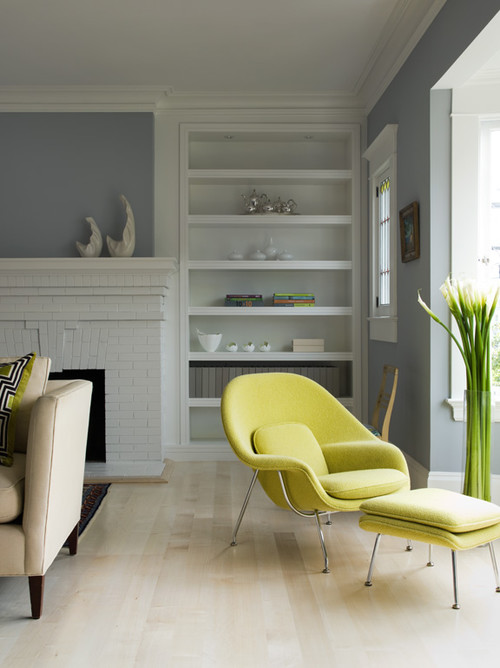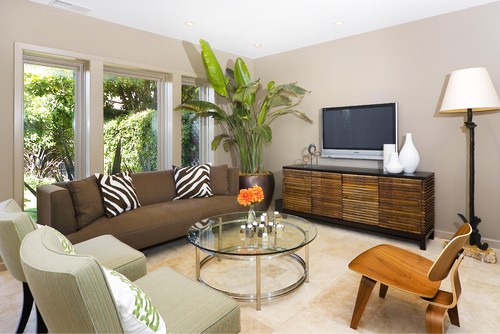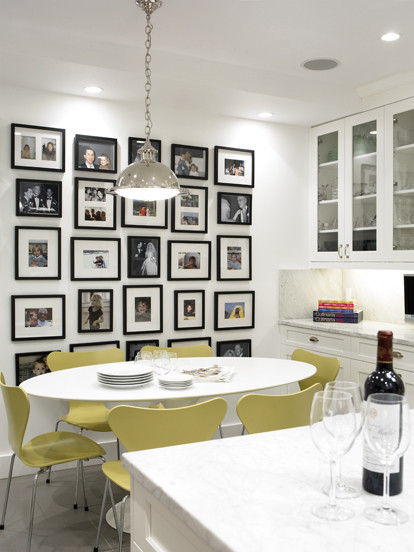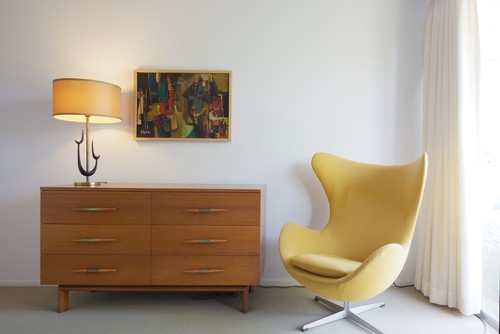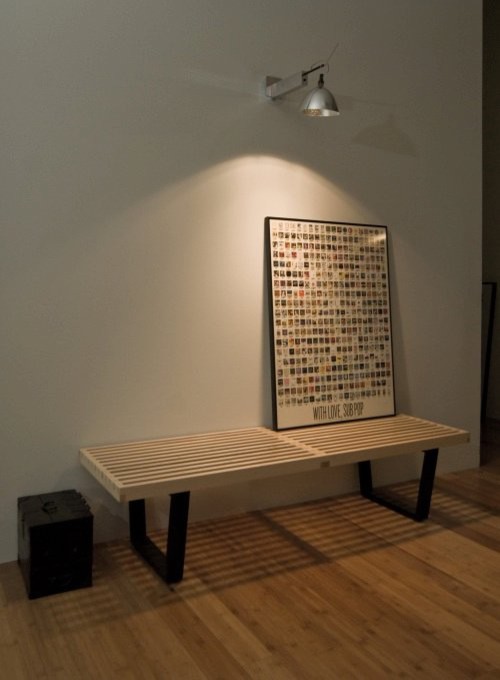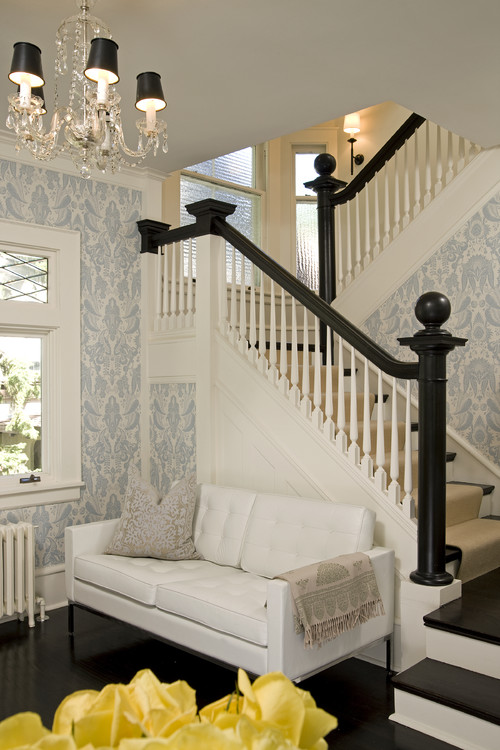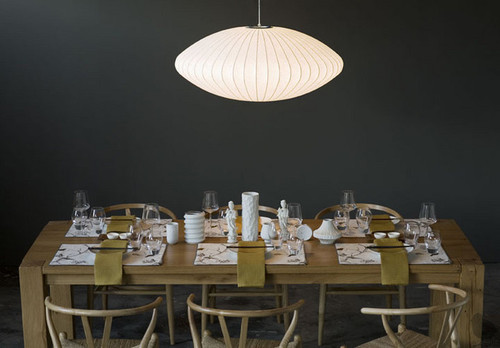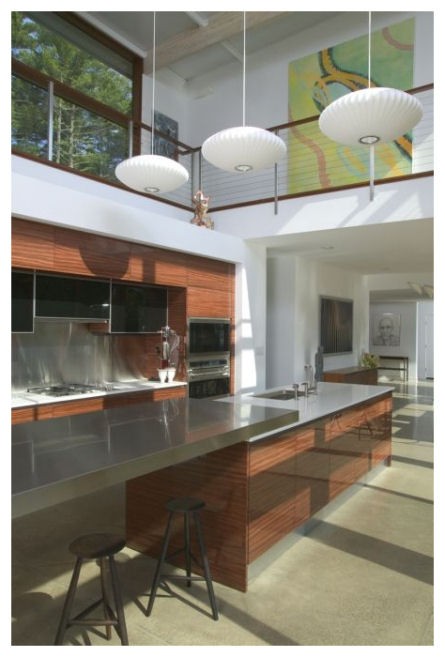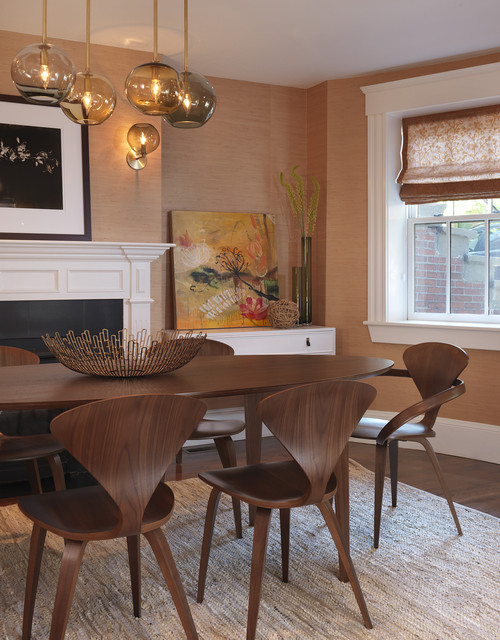 |
| Kitchen table |
When you're buying lighting to hang over a table you should consider these factors:
Height of ceiling
A taller ceiling often requires larger fixtures; many new home builds in my area now have 9 foot ceilings.
Size and shape of table
Your fixture should complement not overpower your table. You can also have lighting fixtures that are too small for a table. I am particular about what shape fixture I mount over a round table; I like to repeat the shape with a circular format, but that's just me.
Height of homeowners
It is a fact that tall homeowners have a greater chance of continually bumping into lights hung too low over a table when they are setting or removing dishes. Some people are so tall your would never mount pendants high enough!
Height above table
The specifics of how high to hang your fixture can be confusing because you will find a range of suggestions depending on which sites you consult. Don't let that deter you. My adage is "Common sense prevails".
I tend to think in terms of a range while taking other factors into account including: personal preference, the height of the homeowners, fixture size, style of fixture, ceiling height, task to be illuminated etc. Read on for examples.
The general recommendations for hanging a fixture over a table is 28 - 32 inches above the table if you have an eight foot ceiling. This graphic from wegotlites recommends 30 inches from the table for an 8 foot ceiling. I placed my kitchen table pendant at 32 inches from the table top so I wouldn't continually bump it when working. It works most times, but when I reach in too far I still bump it.
Art by Mike Gough
My dining room pendant is 34 inches from the table. Being able to view my art collection to best advantage in very important to me, so I moved the dining room pendant up an additional two inches from the hanging height in the kitchen so visitors can view the art over the buffet without disruption while sitting in the living room. You may not find this consideration in any lighting guide!
Another set of guidelines recommend measuring from the floor to the bottom of the shade and suggest 60 - 66 inches as reasonable. Most tables are 30 inches high. That would put the height from the floor to my kitchen shade at 62 inches, and my dining shade at 64 inches, both are within this guideline.
If you have ceilings higher than eight feet, go up 3 inches for each additional foot above eight feet.
Size of fixture
For most applications the diameter of your light fixture should be at least 1/2 the width of your table or even up to 2/3 the width of your table. My kitchen fixture is exactly one half the width of the table at 18 inches in diameter. That's the proportion I like. I could have gone with a diameter of up to 24 in. without it looking too large. My dining fixture is only 16 inches in diameter, but looks larger.
Sizing based on room dimensions
There is another guideline for determining the size of your fixture. Add the length and width of your room together ( eg., 11 feet +14 feet ) and convert the sum to inches (25in.) and that should be the diameter of your fixture.
Of course that is not a hard and fast rule, but it will provide a light fixture that is a focal point for the room. This formula works better for a statement fixture in an entrance or stairway. You can see how it could get out of control in a dining room. Eg. 15 feet + 20 feet would give a fixture diameter of 35 in. That's the width of most dining tables.
I am planning another post about lighting selection for various rooms as I get ready to replace the fixtures in my summer house. Stay tuned.
There is another guideline for determining the size of your fixture. Add the length and width of your room together ( eg., 11 feet +14 feet ) and convert the sum to inches (25in.) and that should be the diameter of your fixture.
Of course that is not a hard and fast rule, but it will provide a light fixture that is a focal point for the room. This formula works better for a statement fixture in an entrance or stairway. You can see how it could get out of control in a dining room. Eg. 15 feet + 20 feet would give a fixture diameter of 35 in. That's the width of most dining tables.
Function of fixtures
The illumination given off by drum shades is soft and calming, but bright enough to provide lighting for an entire room. When a large drum pendant is hung over a table it not only anchors the vignette, but if placed on a dimmer the fixture can provide brighter light for any tasks done at the table and softer light while dining. While I don't have anything against chandeliers, I don't have any in my own home.I'm definitely into clean lines and a very sparse contemporary feel.
I am planning another post about lighting selection for various rooms as I get ready to replace the fixtures in my summer house. Stay tuned.
What variables do you consider when hanging a light over a dining table?

.jpg)







